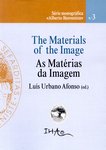Theory vs practice: synthesis of red lead following ancient recipes
 |
Paula M. Gonçalves, João Pires, Ana P. Carvalho, Maria Helena Mendonça, António João Cruz, "Theory vs practice: synthesis of red lead following ancient recipes", in Luís Urbano Afonso (ed.), The Materials of the Image. As Matérias da Imagem, Lisboa, Cátedra de Estudos Sefarditas «Alberto Benveniste» da Universidade de Lisboa, 2010, ISBN 978-989-8465-00-9, pp. 201-210 |
|
|
| Abstract | The synthesis of red lead pigment (chemically lead oxide, Pb3O4 ) was carried out considering different starting lead compounds. The experimental procedure followed was established according to some recipes of ancient painting treatises and the knowledge of the phase transformation of lead oxides. The samples transformation was monitored by X-ray powder diffraction and selected samples were also characterized by scanning electron microscopy. The pure Pb3O4 phase was obtained for the transformation of PbO2 and 2PbCO3·Pb(OH)2. Morphological studies revealed that the material obtained from PbO2 presented the more homogeneous grain size distribution. The transformation of white lead Kremer Pigment resulted in a mixture of Pb3O4 (major phase) and cerussite (PbCO3), leading to a sample with low crystallinity. |
| Ver | |
| Academia | Researchgate | |
| Importar | RIS | Endnote |